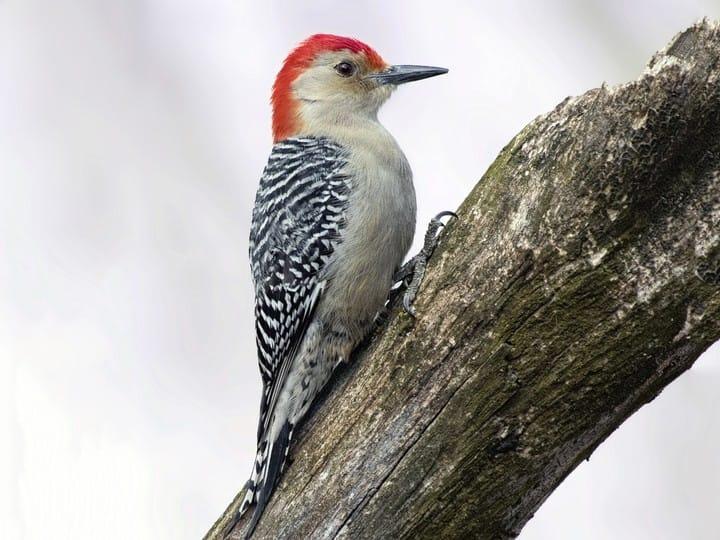Woodpeckers Unleashed: Exploring the Marvels of These Skilled Tree Climbers
Woodpeckers, with their distinct markings and rhythmic drumming resembling via wooded locations, hold a distinct location in the bird globe. Their specialized anatomy and adaptations enable them to browse vertical surface areas with unrivaled skill. Their mastery of tree climbing is simply one aspect of their remarkable behavior. As we delve into the elaborate details of woodpeckers' nesting practices, feeding techniques, and the recurring conservation efforts to safeguard these exceptional birds, a deeper recognition for their area in nature unfolds.
Composition and Adaptations
When taking a look at the makeup and adjustments of woodpeckers, one can observe remarkable features that allow these birds to prosper in their specialized ecological particular niche. Additionally, woodpeckers have zygodactyl feet, with two toes encountering onward and two facing backwards, providing a firm hold on tree trunks while they browse for food or drum for communication.
Furthermore, woodpeckers have an unique tongue framework that is long, barbed, and sticky, allowing them to extract bugs from gaps in wood. This customized adaptation allows woodpeckers to manipulate a food source that is unattainable to several various other bird varieties. Overall, the makeup and adaptations of woodpeckers display the remarkable transformative remedies that have actually enabled these birds to grow in their arboreal habitat.
Drumming Actions
Having actually discovered the makeup and adaptations of woodpeckers, the focus currently moves to comprehending their drumming actions, a distinct facet of their communication and territorial displays. Drumming is an essential kind of communication amongst woodpeckers, serving numerous purposes such as establishing territories, drawing in mates, and signaling alarm. Each woodpecker species has a distinct drumming pattern that assists people acknowledge members of their own types and identify them from rivals or predators.
Woodpeckers generate drumming sounds by swiftly pecking on resonant surface areas such as dead trees, utility posts, or even steel items, developing a series of balanced beats. The intensity and rate of drumming can vary based upon the purpose; for instance, a quick drumming series might signify aggression towards burglars, while a slower and softer drumming pattern could show courtship (Woodpeckers in Florida). Additionally, woodpeckers might change the regularity and duration of their more tips here drumming to convey specific messages properly
Nesting Behaviors
Exploring the nesting habits of woodpeckers reveals fascinating understandings right into their reproductive actions and environment options. Woodpeckers are recognized for their special nesting choices, commonly digging deep into tooth cavities in trees to produce sheltered spaces for raising their young. These cavities offer not just as a nesting site but also as a protected haven from killers and harsh weather.
Woodpeckers exhibit a high degree of fidelity to their nesting sites, commonly going back to the same location every year. This actions highlights the value of suitable habitat accessibility for their reproductive success. The option of a nesting site is crucial for woodpeckers, with factors such as tree species, elevation, and decay stage playing substantial duties in their decision-making process.
Remarkably, some woodpecker varieties are known to excavate several cavities within their region, providing themselves with different nesting alternatives. This method might function as a form of insurance versus potential threats or disruptions to their main nesting site.

Feeding Strategies
One of the most distinctive feeding habits of woodpeckers is drumming, which involves rapid pecking on trees to reveal insects under the bark. Woodpeckers are also understood to excavate cavities in trees to accessibility covert insect larvae or sap. Some species, like the acorn woodpecker, shop nuts in particularly created holes called granaries.
Preservation Efforts
In the middle of the intricate feeding techniques showed by woodpeckers, the conservation efforts targeted at guarding these interesting birds play a critical role in maintaining their habitats and populaces. Woodpeckers encounter numerous hazards to their survival, including environment loss as a result of logging, climate modification altering their ecological communities, and crashes with synthetic structures such as structures and cars - Woodpeckers in Florida. Guardians are proactively working to attend to these obstacles and ensure the long-lasting wellness of woodpecker species

Education and public understanding projects are also essential elements of woodpecker conservation efforts. By increasing recognition about the relevance of these birds in preserving healthy forest communities, preservationists can gather assistance for environment conservation efforts and promote responsible land monitoring practices. With joint initiatives between scientists, policymakers, and local areas, we can collaborate to protect a future where woodpeckers thrive in their natural habitats.
Final Thought
